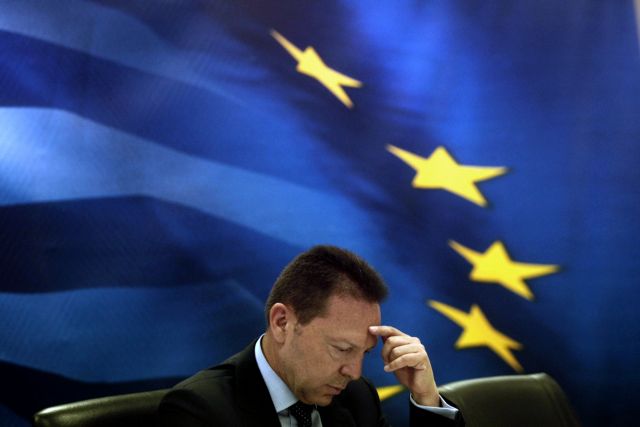According to the Ministry of Finances’ official press release on the public debt, the debt exploded to 309 billion euros by the end of March 2013. The public debt was estimated to be 280.3 billion euros on the 31st of March in 2012 (after the PSI), meaning the debt increased by 29 billion euros in the past 12 months, despite the bond swap that took place in December 2012 and saved an estimated 20 billion euros.
It is not easy to explain why the debt is so resilient. The European Commission’s report on the Greek rescue program indicates that the loans granted to Greece from the EU and IMF are worth about 205.1 billion euros; 73 billion in the first rescue plan and 132.1 billion from the second one.
Debt virtually unchanged since March 2010!
The Ministry of Finances’ official press release indicates that on the 31st of March 2010, before the first Greek bail out loan, the central government’s debt was estimated to be 310.3 billion euros.
That means that after three years of hardship and austerity measures Greece has managed to reduce its debt by nearly 1 billion euros. Despite this marginal reduction of the debt though, the collapse of the GDP by about 25% since 2008 makes the debt unsustainable. The European Commission estimates that the debt will reach 175% of the GDP in 2013 and 2014 and will deescalate to 160% of GDP in 2016.
Silver linings
The good news is that the interest rates Greece needs to pay are rather low, while the repayment period has been greatly extended. In March 2010 52.5% of the debt was long-term, with an average maturity of 7.65 years, compared to March 2013 when 73.2% of debt is long-term and the average maturity of debt has more than doubled to 15.41 years.
By the end of 2020 Greece is expected to have paid of 82 billion euros in bonds and loans. The government has committed to paying 11.3 billion by the end of 2013, 25 billion in 2014 and 16.1 in 2015. From then on the government has to pay between 4 and 8 billion euros annually.





